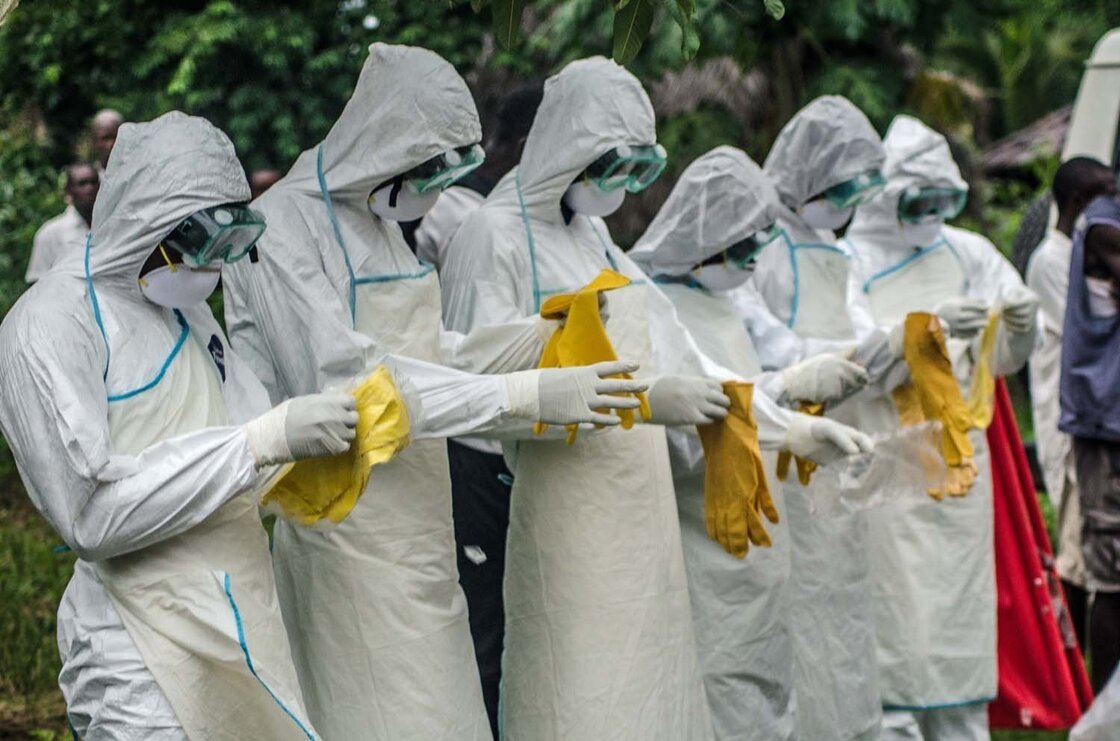Sunday, August 03, 2014
what were drugs?
By
CNu
at
August 03, 2014
7
comments
![]()
Labels: lifestyle , play-at-your-level , priceless....
the great colorado social experiment
By
CNu
at
August 03, 2014
0
comments
![]()
Labels: cognitive infiltration , tactical evolution , What Now?
california drying: is immigration imminent?
By
CNu
at
August 03, 2014
0
comments
![]()
Labels: weather report , What Now?
Saturday, August 02, 2014
"they" sure came up with a vaccine REAL quick: this doesn't end well...,
By
CNu
at
August 02, 2014
0
comments
![]()
Labels: doesn't end well
first "known" cases of ebola being introduced onto u.s. soil...,
By
CNu
at
August 02, 2014
3
comments
![]()
Labels: cull-tech , Deep State , horror
urban cores teeming with contagion prior to pestilential border onslaught...,
By
CNu
at
August 02, 2014
8
comments
![]()
Labels: agenda , elite , establishment , quorum sensing?
Friday, August 01, 2014
unaccompanied illegals just crawling with disease....,
By
CNu
at
August 01, 2014
6
comments
![]()
Labels: horror , propaganda , What Now?
ed, feed, august in chicago sounding better by the minute about now...,
By
CNu
at
August 01, 2014
9
comments
![]()
Labels: cull-tech , Farmer Brown , not a good look
doctors told to prepare for global outbreak after victim was allowed on two planes...,
 |
| Victim: Mr Sawyer, with one of his children, died from Ebola in West Africa |
By
CNu
at
August 01, 2014
0
comments
![]()
Labels: cull-tech , horror , weather report
ebola in west africa: the outbreak country by country
By
CNu
at
August 01, 2014
0
comments
![]()
Labels: horror , macrobiology , randomization
Thursday, July 31, 2014
what happens when digital cities are abandoned?
Kipple is useless objects, like junk mail or match folders after you use the last match or gum wrappers of yesterday's homeopape. When nobody's around, kipple reproduces itself. For instance, if you go to bed leaving any kipple around your apartment, when you wake up the next morning there's twice as much of it. It always gets more and more.
By
CNu
at
July 31, 2014
9
comments
![]()
Labels: cultural darwinism , Living Memory
where online services go when they die...,
By
CNu
at
July 31, 2014
0
comments
![]()
Labels: cultural darwinism , Living Memory
Wednesday, July 30, 2014
suburbs will die: the most spectacular future time orientation failure in human history...,
By
CNu
at
July 30, 2014
0
comments
![]()
Labels: big don special , conspicuous consumption , de-evolution , FAIL , Race and Ethnicity , you used to be the man
u.s. network infrastructure under attack: subversion of future time orientation failure?
By
CNu
at
July 30, 2014
0
comments
![]()
Labels: Collapse Crime , de-evolution , domestic terrorism , institutional deconstruction
Tuesday, July 29, 2014
who goes dry first, vegas or phoenix?
By
CNu
at
July 29, 2014
15
comments
![]()
Labels: weather report , What Now?
satellite study reveals parched u.s. west using up underground water
This study is the first to quantify the amount that groundwater contributes to the water needs of western states. According to the U.S. Bureau of Reclamation, the federal water management agency, the basin has been suffering from prolonged, severe drought since 2000 and has experienced the driest 14-year period in the last hundred years. The study has been accepted for publication in Geophysical Research Letters, a journal of the American Geophysical Union, which posted the manuscript online today.
The research team, led by NASA and University of California, Irvine, scientists, used data from NASA’s Gravity Recovery and Climate Experiment (GRACE) satellite mission to track changes in the mass of the Colorado River Basin, which are related to changes in water amount on and below the surface. Monthly measurements of the change in water mass from December 2004 to November 2013 revealed the basin lost nearly 53 million acre feet (65 cubic kilometers) of freshwater, almost double the volume of the nation’s largest reservoir, Nevada’s Lake Mead. More than three-quarters of the total — about 41 million acre feet (50 cubic kilometers) — was from groundwater.
“We don’t know exactly how much groundwater we have left, so we don’t know when we’re going to run out,” said Stephanie Castle, a water resources specialist at the University of California, Irvine, and the study’s lead author. “This is a lot of water to lose. We thought that the picture could be pretty bad, but this was shocking.”
Water above ground in the basin’s rivers and lakes is managed by the U.S. Bureau of Reclamation, and its losses are documented. Pumping from underground aquifers is regulated by individual states and is often not well documented.
“There’s only one way to put together a very large-area study like this, and that is with satellites,” said senior author Jay Famiglietti, senior water cycle scientist at NASA’s Jet Propulsion Laboratory (JPL) in Pasadena, California, on leave from UC Irvine, where he is an Earth system science professor. “There’s just not enough information available from well data to put together a consistent, basin-wide picture.”
Famiglietti said GRACE is like having a giant scale in the sky. Within a given region, the change in mass due to rising or falling water reserves influences the strength of the local gravitational attraction. By periodically measuring gravity regionally, GRACE reveals how much a region’s water storage changes over time.
The Colorado River is the only major river in the southwestern United States. Its basin supplies water to about 40 million people in seven states, as well as irrigating roughly four million acres of farmland. Fist tap Dale.
By
CNu
at
July 29, 2014
0
comments
![]()
Labels: weather report , What Now?
Monday, July 28, 2014
the government rulebook for labelling you a "terrorist"
By
CNu
at
July 28, 2014
48
comments
![]()
Labels: agenda , civil war , clampdown , elite , establishment
Sunday, July 27, 2014
thirsty in the detroit littoral: writing off the future of a large part of humanity...,
By
CNu
at
July 27, 2014
14
comments
![]()
Labels: clampdown , Collapse Casualties , Collapse Crime , What Now?
doing god's work reducing surplus population
Trevelyan's most enduring mark on history may be the quasi-genocidal anti-Irish racial sentiment [sic] he expressed during his term in the critical position of administrating relief for the millions of Irish peasants suffering under the Irish famine as Assistant Secretary to HM Treasury (1840-1859) under the Whig administration of Lord Russell.[1]
His most lasting contribution, however, began in the 1850s with the publication of his and Sir Stafford Northcote's report on 'The Organisation of the Permanent Civil Service'. The report led to the transformation of the civil service. Educational standards and competitive admission examinations ensured that a more qualified body of civil servants would become administrators.[2]
By
CNu
at
July 27, 2014
0
comments
![]()
Labels: agenda , cull-tech , elite , establishment
the biology of ideology
By
CNu
at
July 27, 2014
0
comments
![]()
Labels: essence , neurotypes , What IT DO Shawty...
mistreatment effects gene expression
By
CNu
at
July 27, 2014
0
comments
![]()
Labels: Genetic Omni Determinism GOD
Saturday, July 26, 2014
how far should society go to make sure "the least of these" get the best available treatments?
By
CNu
at
July 26, 2014
60
comments
![]()
Labels: profitability , ROI , scarcity , scientific morality
the christian right's five worst "scientific" claims
Secularists are desperate to find life in outer space, as they believe that would provide evidence that life can evolve in different locations and given the supposed right conditions! The search for extraterrestrial life is really driven by man’s rebellion against God in a desperate attempt to supposedly prove evolution!
By
CNu
at
July 26, 2014
7
comments
![]()
Labels: the wattles
the runner-up religions of america
By
CNu
at
July 26, 2014
0
comments
![]()
Labels: American Original
Friday, July 25, 2014
tossing bd an expensive prr bone: current opinion in neurobiology communication and language issue
sciencedirect | Communication and language - Edited by Michael Brainard and Tecumseh Fitch
Communication about social status
Review Article- Pages 1-4
- Russell D Fernald
- Not entitled to full text
The evolution of language from social cognition
Review Article- Pages 5-9
- Robert M Seyfarth, Dorothy L Cheney
Highlights
- Language and primate communication share many neural mechanisms and social functions.
- Like humans, primates use vocalizations to facilitate social interactions
- Call meaning depends on call type, caller ID, kinship, rank, and prior behavior.
- Primate communication constitutes a discrete, combinatorial, and open-ended system.
- When language first evolved, many of its distinctive features were already present.
By
CNu
at
July 25, 2014
6
comments
![]()
Labels: big don special
citing drudge, big don says that dogs and chimps have language...,
By
CNu
at
July 25, 2014
0
comments
![]()
Labels: big don special , ethology
Sheryl Sandberg Lies, The NYTimes Lies, None Of This Shit Happened....,
Billionaire Zionist @sherylsandberg is confronted with a @TheGrayzoneNews takedown of the report she cites to bolster the narrative of her...

-
theatlantic | The Ku Klux Klan, Ronald Reagan, and, for most of its history, the NRA all worked to control guns. The Founding Fathers...
-
Video - John Marco Allegro in an interview with Van Kooten & De Bie. TSMATC | Describing the growth of the mushroom ( boletos), P...
-
Farmer Scrub | We've just completed one full year of weighing and recording everything we harvest from the yard. I've uploaded a s...



















